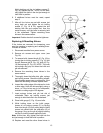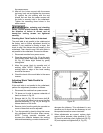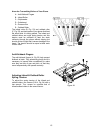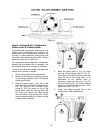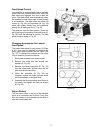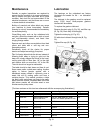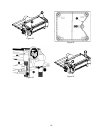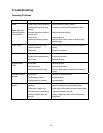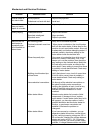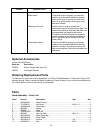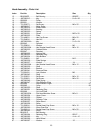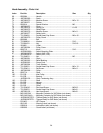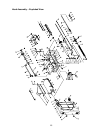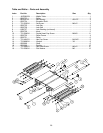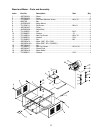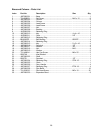
21
Mechanical and Electrical Problems
Problem Possible Cause Solution
Uneven depth of
cut side to side.
Knife projection.
Cutterhead not level with bed.
Adjust knife projection.
Level bed.
Board thickness
does not match
depth of cut scale.
Depth of cut scale incorrect. Adjust depth of cut scale.
Chain jumping. Inadequate tension.
Sprockets misaligned.
Sprockets worn.
Adjust chain tension.
Align sprockets.
Replace sprockets.
Machine will not
start/restart or
repeatedly trips
circuit breaker or
blows fuses.
No incoming power.
Overload automatic reset has
not reset.
Planer frequently trips.
Building circuit breaker trips
of fuse blows.
Loose electrical connections.
Motor starter failure.
Motor starter failure.
Verify unit is connected to power.
When planer overloads on the circuit breaker
built into the motor starter, it takes time for the
machine to cool sown before restart. Allow unit
to adequately cool before attempting restart. If
problem persists, check amp setting on the
motor starter inside the electrical box.
One cause of overloading trips which are not
electrical in nature is too heavy a cut. If too
deep a cut is not the problem, then check the
amp setting on the overload relays. Match the
full load amps on the motor as noted on the
motor plate. If amp setting is correct then there
is probably a loose electrical lead. Check amp
setting on motor starter.
Verify that planer is on a circuit of correct size.
If circuit size is correct, there is probably a
loose electrical lead. Check amp setting on
motor starter.
Go through all the electrical connections on
the planer including motor connections,
verifying the tightness of each. Look for any
signs of electrical arcing which is a sure
indicator of loose connections or circuit
overload.
Examine motor starter for burned or failed
components. If damage is found, replace
motor starter. If motor starter looks okay but is
still suspect, you have two options: have a
qualified electrician test the motor starter for
function, or purchase a new starter and
establish if that was the problem on
changeout.
If you have access to a voltmeter, you can
separate a starter failure from a motor failure
by first, verifying incoming voltage are 220 +/-
20 and second, checking the voltage between
starter and motor at 220 +/- 20. If incoming
voltage is incorrect, you have a power supply
problem, If voltage between starter and motor



